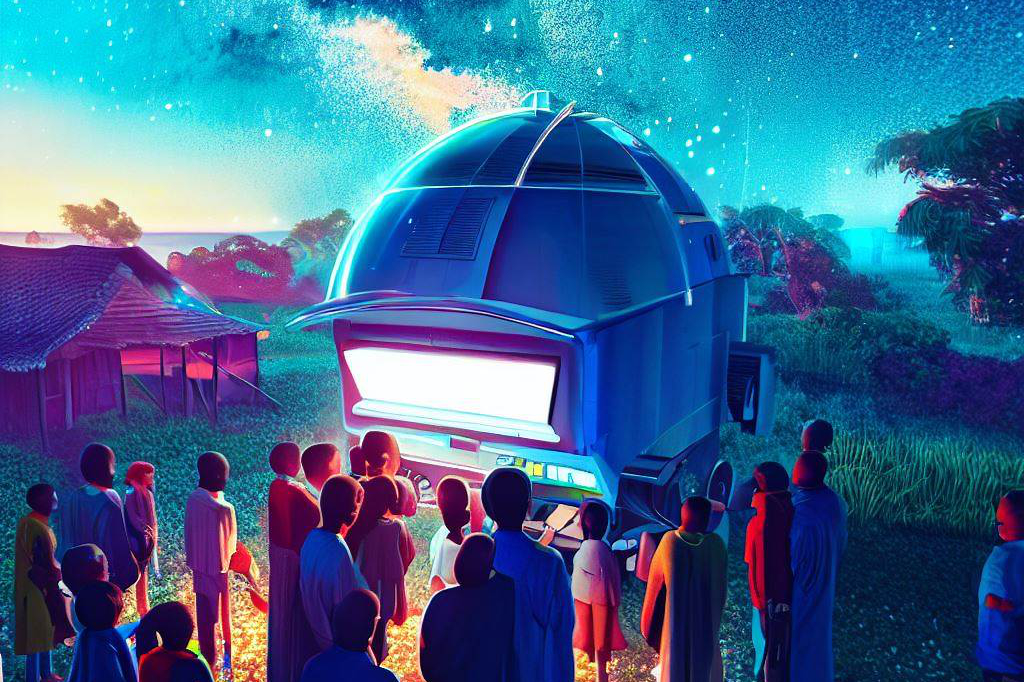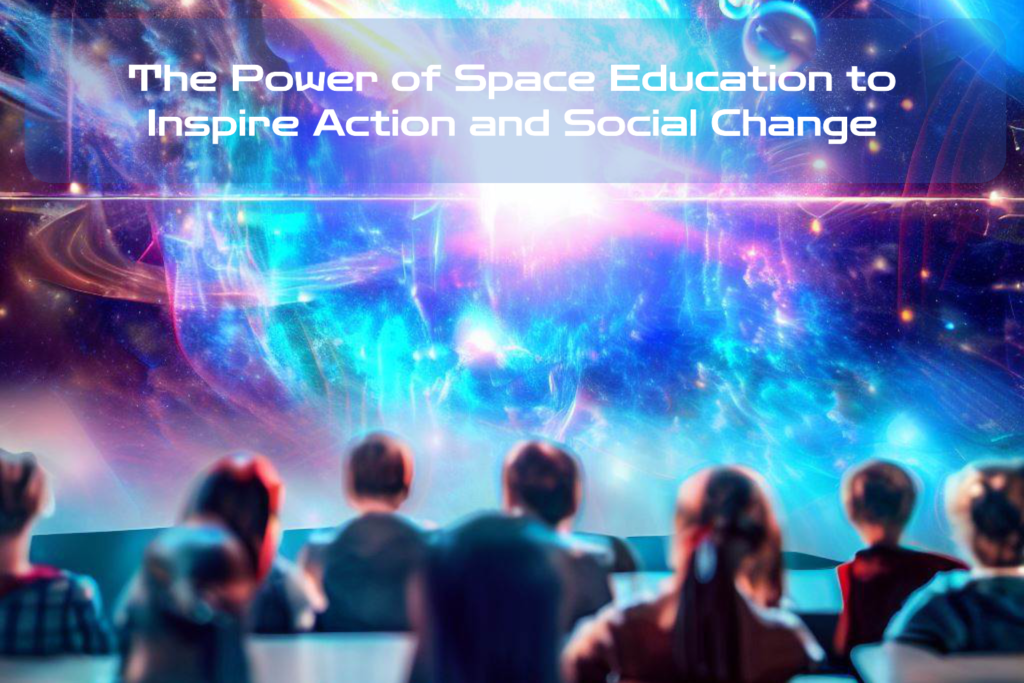The Final Frontier: A Brief Overview of Space Education
Space education is a rapidly growing field that brings together science, technology, engineering, and mathematics (STEM) with the awe-inspiring mysteries of the universe. At its core, space education is about inspiring curiosity and wonder in learners of all ages. It’s about instilling a passion for exploration and discovery that can lead to groundbreaking scientific breakthroughs but also meaningful action on important social issues.
Space education takes many forms, from traditional academic programs in astronomy and astrophysics to immersive museum exhibits, space camps for kids, and even VR experiences that allow you to explore distant planets without ever leaving your living room. Whether it’s through hands-on experiments or inspiring lectures from top scientists in the field, space education has the power to capture imaginations and open up new worlds of possibility.
From STEM Skills to Social Change: Unlocking the Potential of Space Education

One key benefit of space education is its ability to cultivate critical thinking skills among learners. By engaging with complex topics like astrophysics or planetary geology, students are challenged to think creatively and problem-solve in ways that go far beyond rote memorization or basic arithmetic.
This kind of training can have lasting benefits not just for individual learners but for society as a whole – after all, we need talented problem-solvers now more than ever. Beyond this foundational benefit, there are many other ways that space education can inspire action on important social issues.
For example:
– Climate change: Studying Earth from above gives us a unique perspective on our planet’s natural systems – including those affected by human-driven climate change.
By exploring atmospheric science or tracking ocean currents from afar via satellite imagery, students can gain an understanding of the urgency of tackling climate change and develop a passion for environmental stewardship.
– International cooperation: Many space missions involve collaboration between scientists and engineers from all around the world.
By working together to solve complex problems in space exploration, learners can gain an appreciation for global teamwork and see firsthand the benefits of cross-cultural collaboration.
– Diversity and inclusion: Finally, space education has the power to inspire action on issues of diversity and inclusion within STEM fields.
By seeking out underrepresented voices in science, promoting equitable access to resources, and showcasing diverse role models in space exploration, educators can help create a more inclusive future.
In short, by inspiring curiosity among learners about our place in the universe, space education has the potential to create a better world for us all.
The Benefits of Space Education

Cultivating Curiosity, Critical Thinking, and Problem-Solving Skills
Space education can be an incredibly powerful tool for inspiring students to ask questions, solve problems, and think critically about the world around them. By exploring complex scientific concepts like gravity, planetary motion, and the composition of the universe, students are challenged to think beyond what they already know.
For many students who may not have previously found an interest in science or math, space education can open up a whole new world of exploration. In addition to fostering curiosity and critical thinking skills, space education also encourages problem-solving skills.
The challenges that come with space exploration require creative solutions that go beyond typical textbook answers. Through hands-on activities like designing a Mars habitat or calculating rocket trajectories, students learn how to approach complex problems with innovative solutions.
The Role of Space Education in Promoting STEM Education and Careers
Space education has long been recognized as a means of promoting STEM (Science, Technology, Engineering and Math) education and careers.
In order to explore space effectively, it requires advanced technology and scientific knowledge. By studying space science in the classroom or participating in related extracurricular activities like robotics clubs or astronomy camps, students gain exposure to these fields at an early age.
For those interested in pursuing careers in STEM fields related to space exploration, such as engineering or astrophysics, early exposure through space education programs can be especially beneficial. These programs provide opportunities for hands-on experience that builds the skills necessary for success in these fields.
Overall, the benefits of incorporating space education into traditional school curriculums cannot be overstated. Fostering curiosity and critical thinking skills while providing exposure to STEM careers related to space exploration will help build a new generation of innovators ready to tackle the complex issues facing our world today.
Space Exploration as a Catalyst for Social Change
The Moon Landing and Civil Rights Movement
In 1969, the world watched in awe as Neil Armstrong took his famous first step on the moon. The Apollo program not only demonstrated American technological superiority to the rest of the world, but it also inspired a new sense of pride and unity among Americans. However, what many people don’t know is that the Apollo program was also an important catalyst for social change.
Despite facing discrimination and segregation at home, African-American women played a critical role in calculating trajectories for NASA’s missions. The success of these women and their contributions to space exploration helped pave the way for greater opportunities in science and technology fields for women and minorities.
Current and Future Space Missions: Addressing Global Issues
Today, space missions have the potential to inspire action on important global issues such as climate change, sustainability, and global cooperation.
For example, NASA’s Orbiting Carbon Observatory-2 (OCO-2) mission is helping scientists better understand how carbon dioxide moves through Earth’s atmosphere.
This information is critical to developing effective policies to address climate change. Other space missions are focused on promoting global cooperation on important issues such as disaster relief efforts or international peacekeeping efforts.
For instance, NASA has worked closely with international partners such as Russia to maintain long-term human presence aboard the International Space Station (ISS). The ISS has served as a symbol of international cooperation since it was first launched into space in 1998.
The Power of Space Exploration
The power of space exploration lies not just in its technological achievements but also in its ability to inspire individuals from all walks of life to take action on important social issues. Whether it is promoting diversity and inclusion within STEM fields or inspiring individuals to take action on climate change or other global challenges, space education remains an important tool to inspire individuals to make a difference in the world. As we look towards the future of space exploration, it is important that we continue to leverage its power to promote positive social change around the globe.
Engaging Marginalized Communities Through Space Education

Space Education as a Tool for Inclusion and Diversity
Space education has the potential to be a powerful tool for promoting diversity and inclusion in STEM fields. Historically, marginalized groups have been underrepresented in the field of space exploration.
However, by utilizing space education programs, we can help bridge this gap and create opportunities for underrepresented communities to engage with STEM subjects. One successful program that is leading the way is the Sally Ride Science Academy.
This program focuses on engaging young girls from underprivileged backgrounds in STEM subjects. It provides them with opportunities to learn about space exploration while also developing important critical thinking and problem-solving skills.
Another great example is the Mars Generation, which aims to inspire young people from all backgrounds to pursue careers in space exploration. By providing scholarships, internships, and mentorship programs, they are helping break down barriers for those who may not have had access to these types of opportunities otherwise.
Examples of Successful Programs
There are many successful programs currently using space education as a means of promoting diversity and inclusion in STEM fields. One such program is Girls Who Code’s Summer Immersion Program, which provides girls with hands-on experience coding and working on projects related to space exploration.
Another great example is NASA’s Minority University Research & Education Project (MUREP), which provides funding and resources for minority-serving institutions to conduct research related to NASA’s mission. This program has helped increase diversity within NASA’s workforce while also advancing important research projects.
There’s Space Camp Turkey – a unique program that uses space-themed activities to bring together children from different backgrounds across Turkey. This camp provides students with an opportunity to learn about science while also building relationships with peers from diverse cultural backgrounds.
The Importance of Inclusive Space Education Programs
Inclusive space education programs are crucial for creating a more diverse and innovative space industry. By providing opportunities for underrepresented communities to engage with STEM subjects, we can help create a more inclusive society while also advancing important research and exploration projects.
It’s important that we continue to prioritize and fund these types of programs, as they have the potential to make a significant impact on both individuals and society as a whole. By working together, we can create a space industry that is inclusive, innovative, and reflective of our diverse global community.
The Future of Space Education: Opportunities and Challenges

Emerging trends in space education, such as commercial space travel and private sector involvement in research
The future of space education is looking exciting, with emerging technologies paving the way for new opportunities. One trend that has gained significant momentum in recent years is commercial space travel. Companies like SpaceX and Blue Origin are actively working on developing reusable rockets and spacecraft that can take civilians into space.
This presents a unique opportunity for space education, as it offers the potential to expand access to space beyond just government agencies. Private sector involvement in research is also increasing, as companies like Virgin Galactic work on deploying satellites for scientific research purposes.
This opens up new avenues for students interested in pursuing careers in fields related to space research or engineering. The growth of the private sector in this field can help cultivate more interest from younger generations, who may be unfamiliar with traditional government-funded programs.
Challenges facing the field, including funding constraints and ethical considerations
One major challenge facing the field of space education is funding constraints. Government-funded programs are often affected by changes in political administrations or by other economic factors. Private companies may also face similar obstacles when it comes to securing investments or adequate resources to conduct their operations.
Another challenge for this field is addressing ethical considerations surrounding issues such as sustainability, resource extraction, and potential dangers associated with certain types of missions (e.g., those involving nuclear power). As we continue to explore more deeply into outer space, it becomes imperative that educators ensure students understand these complex issues and how they relate to our planet.
Overall, though, despite these challenges, there is a bright future ahead for those involved in space education. With emerging trends such as commercial travel and private-sector involvement providing new opportunities along with innovative methods for engaging students around the world – like virtual reality experiences – there’s never been a better time than now to get involved in space education.
Final Thoughts: The Power of Space Education to Inspire Action

To truly harness the power of space education for social good, it requires a collaborative effort among educators, policymakers, and advocates alike.
By prioritizing investment in STEM education programs that incorporate principles of space exploration across all levels of schooling – from primary school up through higher education – we can cultivate a more scientifically literate population capable of tackling complex global challenges.
Beyond this investment in formal educational settings lies an opportunity for advocacy groups to leverage creative outreach initiatives that tap into our collective fascination with outer space.
By inspiring young people – particularly those from marginalized communities – towards careers related to science and technology fields that aim at solving global problems, especially climate change, we could make all the difference.
Ultimately, by taking steps towards prioritizing investment in these areas while tapping into our shared sense of wonder at exploring beyond Earth’s atmosphere together, we can create a brighter future for our planet and all who inhabit it.

C M, a seasoned editor, journalist, and consultant, is deeply fascinated by the convergence of technology, space, and the future of humanity.
With a particular interest in transhumanity, futurology, and the philosophical and ethical dimensions of these domains, C M serves as the lead contributor to SpaceSpotlight and TranscendSphere.
When not penning insightful articles on these rapidly evolving fields, C M indulges in their love for podcasts and books, proudly embracing their status as a ‘Happy Nerd Extraordinaire!’



